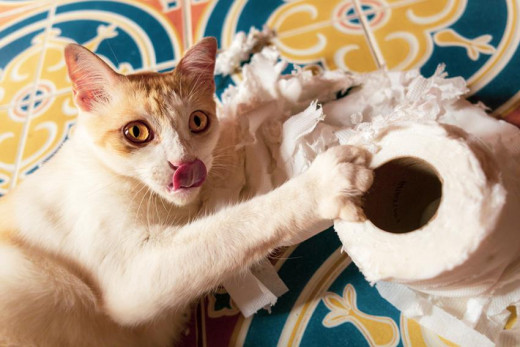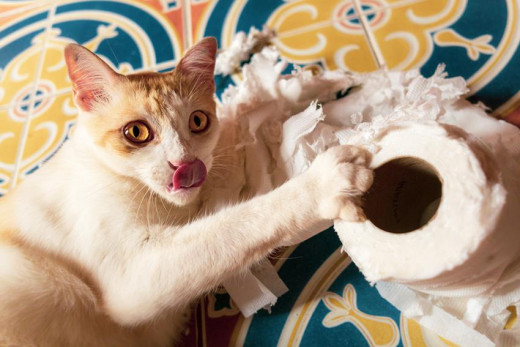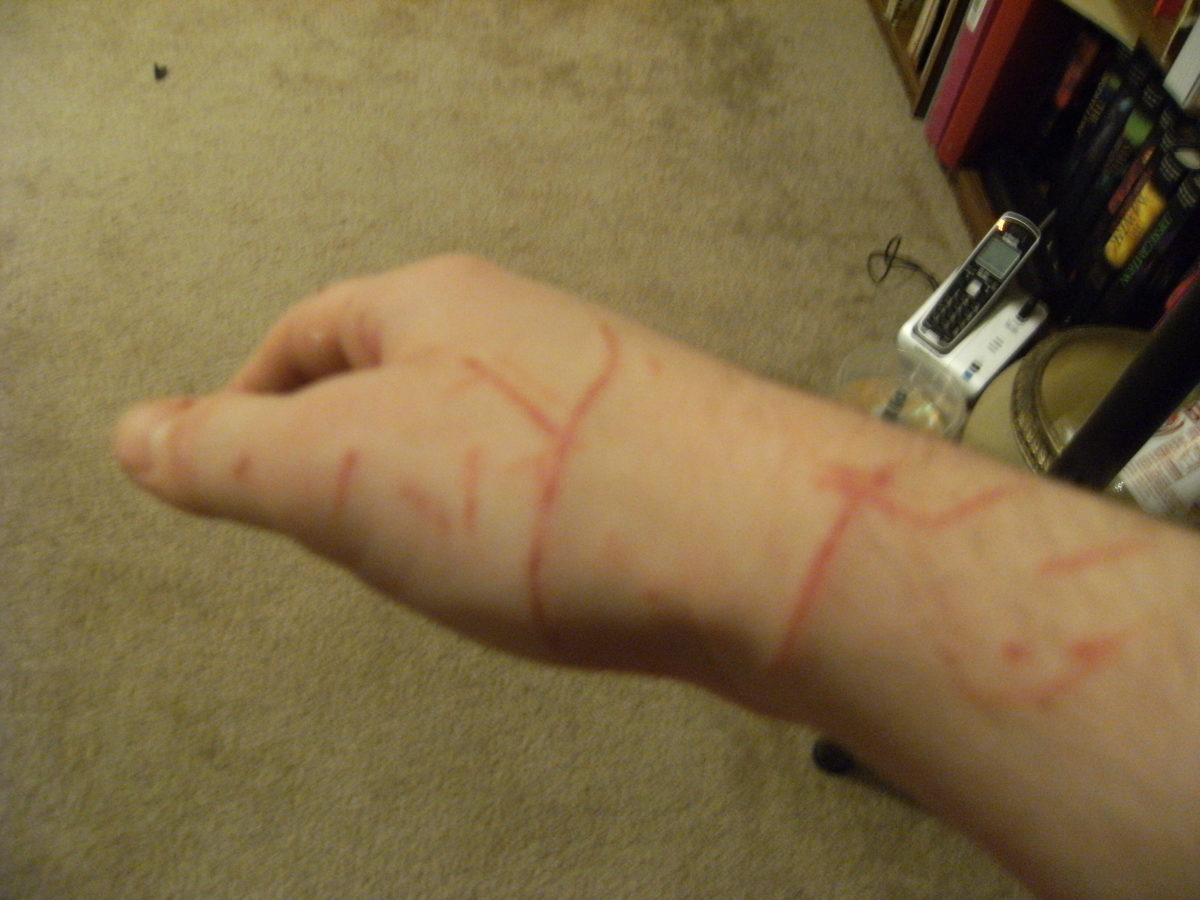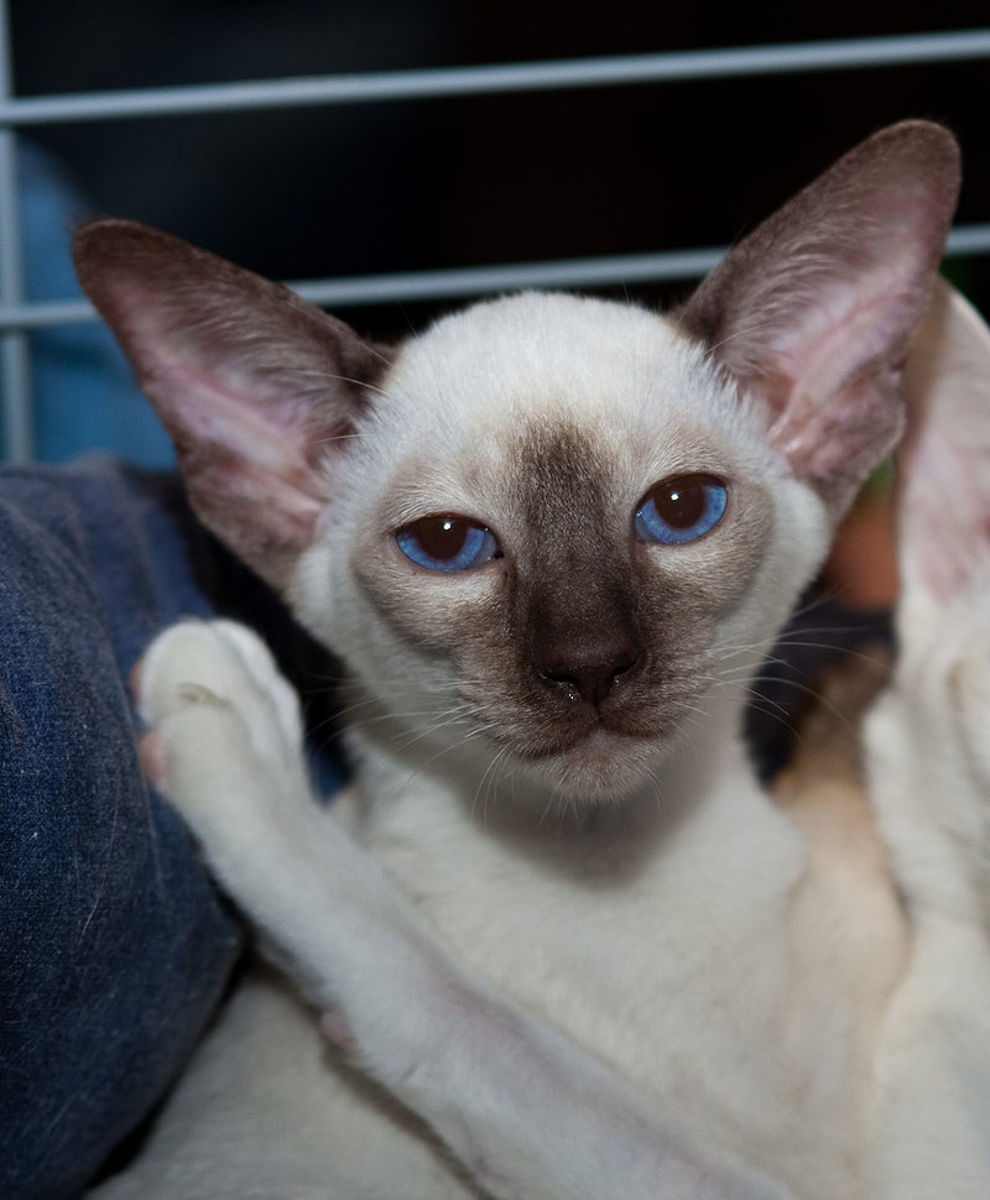Cat Advice: How Do You Handle Your Crazy Cat?


Good cat advice is sometimes hard to come by, especially when it comes to handling these curious, playful, and finicky individuals. Your feline guy or gal will usually behave exactly the way you DO NOT want them to whenever possible. One trick that will produce positive results in securing a well-behaved animal is so simple it is laughable. Fake your kitty into thinking your one of them by playing and talking with them. Every cat out there, not only reacts positively to the human voice but will also become quite docile over time, when you talk to them on a daily basis. You can try this out by regularly feeding a stray cat in your neighborhood, and talking to them as if they are a friend of yours, whenever you put food down. Eventually, they will start talking to you by meowing, flicking their tails, and marking territories by giving head nuggies to every object in the path between you and them. Of course, the meal doesn't hurt, but you will find that it works even without the food. Return back to speak with them several minutes after the meal or try it with your friend or neighbors pet.
Socializing with your favorite furry friend daily will actually make it easier for you when the time comes to pick up, restrain or transport them for one reason or another. You now have their trust.
There are a number of effective methods for handling and restraining a cat. Your choice will depend on whether the individual is tranquil and cooperative or frightened and aggressive. The odds will be in your favor for having a tranquil and cooperative pet if you've chosen the socialize your cat advice in the opening paragraph. However just to be safe, let's discuss all the possibilities.
Picking Up Your Cat
Generally, it is better to reach down and pick a cat up from above. A face-to-face confrontation might provoke them into becoming uncooperative or aggressive.
The Cooperative Cat : Place one hand around his abdomen beneath his chest and take hold of his front legs so they cross over each other, keeping your index finger between them for a secure grip. Pick him up and snuggle him close to your body. Cradle his chin with your other hand.
The Apprehensive Cat : Reach down and lift the cat up by the scruff of his neck. Most cats are very open to this method, as they will usually go limp, just as they did when their mothers carried them as kittens.
The Frightened Cat : Cover the cat with a towel. After a few minutes, as he calms, slide the rest of the towel underneath him and lift him up as a bundle.
The Aggressive Cat : Form a loop with a leash or a piece of rope and slip it over his head and one front leg. Then lift the cat up by the leash and set him down on a table, or lower him into a box or cat carrier. This is the least advisable method and should be used only as a last resort, as it will certainly agitate the cat further.
Restraining Your Cat for Treatment
Restraining Your Cat For Treatment
Routine procedures like grooming, bathing, or even medicating when your cat is cooperative, are best carried out with a minimum of physical restraint. Approach the cat with confidence and handle him gently. Most cats can be coaxed into accepting the procedure and do not need to be restrained.
Cooperative Cat : Lift him up onto a smooth surface such as a tabletop where he is less secure, but still not frightened. Soothe him and speak to him in a calm voice until he relaxes. Place one hand around the front of his chest to keep him from moving forward, and use your other hand to administer the treatment.
Uncooperative Cat : Based upon his degree of agitation, several methods are available.
If the cat is sufficiently cooperative to permit handling, hold him by the scruff of his neck and press him down against the top of the table so that he stretches out. This will prevent him from scratching you with his rear claws. When help is available have your assistant stand behind the cat and place both his hands around the cat's neck or front legs while pressing his arms against the cat's sides. For short procedures such as giving medications, wrapping a towel or blanket around the cat has a calming effect. The assistant is needed to hold the wraps in place and steady the cat.
A coat sleeve makes an excellent restraint, especially if it has recently been laundered or is warm. A cat will readily scoot up into it willingly. While holding the end of the sleeve securely around the cat's neck you can treat his head or tail.
Cat's will usually settle down and accept the treatment when they are properly restrained. Cat's have a short memory and will forget the unpleasant experience when they are released.
Transporting Your Injured Cat
A cat can not be held responsible for his actions, when he is severely injured or in pain. Whether he is a friendly or docile cat by nature, it doesn't matter. Under severe circumstances, he may scratch or bite. Absolutely NEVER struggle unsuccessfully with a weak or injured cat. This could tire him out quickly and produce further shock and collapse.
If able to handle, pick the cat up as described above for the cooperative cat, and place him against your hip, with the rear claws pointing backward where they can do no harm. Press the inside of your elbow and forearm against the cat's side and hold him firmly against your body. Cover his eyes and ears with your other hand.
If the cat is in pain or frightened you should take precautions to avoid injury by lifting him up from behind the nape of the neck and lower him into a cat carrier or a cloth bag such as a pillowcase. The material can not be airtight or the cat will smother. Once the cat is inside and can not see out he will begin to feel more secure and relax.
If completely unable to handle it, throw a towel over the cat to calm him and set a box on top. Rise the edge of the box and slide the top underneath. The cat is now safe and secure and ready for transport.
This is the best cat advice for handling, restraining, and transporting your furry friend. It will give you peace of mind. You might even talk to your guy or gal on the way to their destination. It will calm the two of you down.
References: The Cat Owner's Home Veterinary Handbook by Delbert G. Carlson, D. V. M. and James M. Giffin, M.D. - First Edition
- Cat Health Problems
Common cat health problems range from simple inconveniences to life-threatening accidents and illnesses.
- Cat Problems and Medications
Cat problems have always been present when administering medications. Cats, unlike most other domestic animals, appear to be unusually sensitive to drugs and medications. This applies to drugs used by the...





